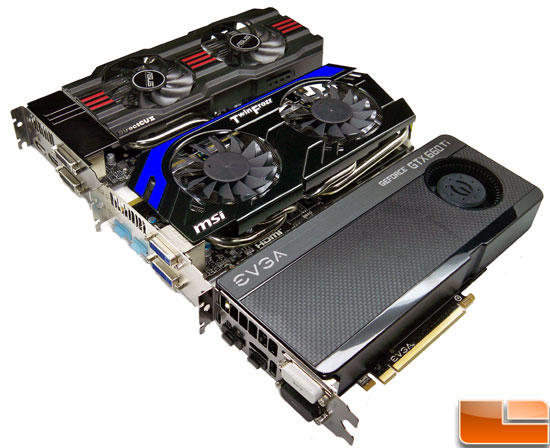NVIDIA GeForce GTX 660 Ti Video Card Review w/ ASUS, EVGA & MSI
The GeForce GTX 660 Ti

Just a few short months ago NVIDIA released their second video card based on Kepler, the GeForce GTX 670. In that time the GeForce GTX 670 has become a very hot seller, maybe not quite as hot as this summer has been, but there is no denying the performance potential of the card. Many of you have been clamoring for information about a more affordable Kepler but very little has been talked about over the last few months.

Today, as they say, is a new day. NVIDIA pulls the wrappings off of their latest in the Kepler line, the GeForce GTX 660 Ti. Once again NVIDIA hearkens back to the GeForce 3 and GeForce 4 lines from eleven years ago (has it really been that long?) with the Ti designation. The GeForce GTX 660 Ti slots itself below the GeForce GTX 670 in the Kepler performance hierarchy. It is designed to be the performance per dollar sweet spot that many of you have been clamoring for.

Starting at $299, NVIDIA has packed plenty of performance into the GeForce GTX 660 Ti. The foundation of the card, the GPU itself should seem very familiar most, it’s identical to the GeForce GTX 670. Yes, this little beast comes to the fight carrying the same 1344 CUDA Cores, 112 Texture Units, and 7 SMX’s as its bigger brother. The Base Clock, Boost Clock, Memory Clock, and 2GB of memory is also the same. The only difference is that the number of ROP Units has been decreased to 24 from 32, the memory bus has been reduced to a 192-bit bus from a 256-bit bus and the L2 cache size is now 384KB instead of 512KB. The memory bandwidth on the GeForce GTX 660 Ti is ~144 GB/s versus ~192 GB/s on the GeForce GTX 670/680, which is a 25% reduction.
How big of an impact will these changes make in the tests? We will have to see. Thanks to the reductions, the GeForce GTX 660 Ti is more power efficient with just a 150W TDP rating when not overclocked.
You may be thinking that the memory bus may hold back performance but that would be an incorrect assumption. The GeForce GTX 660 Ti is designed for gamers who aren’t running multiple monitors or some of the more exotic set ups, with emphasis on non-AA enabled 2560×1600, AA enabled 1920×1200 and 1920×1080. You’ll be pleasantly surprised to find the GeForce GTX 660 Ti can outperform the GeForce GTX 670 at lower resolutions thanks to aggressive boost and overclocked speeds from companies like ASUS, EVGA, and MSI.

Speaking of overclocking, the GeForce GTX 660 Ti does not disappoint and is capable of some incredible memory overclocks, allowing the card to make up a bit of ground due to it’s lack of bus width with raw speed. Enough talking already, let’s take a look at the hardware on hand and see what it can do!

Comments are closed.